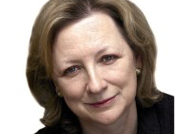Carla Carlisle in Paris
Carla Carlisle's idea of heaven is sitting in a Parisian café with a noisette (an espresso with a dash of milk) and reading Le Monde


It’s Ellie’s last day in Paris. Before she arrived in Janu-ary for a six-month stint in her gap year, she’d only been here on two day trips. She found an apartment on the internet a studio in the 17th arrondissement for €700 a month and only when she arrived at her new address did she realise that not all Paris neighbourhoods look like scenes from Amélie. Still, she gave her new domi-cile a good scrub and set about finding work, landing a job with a family living in a grand luxe apartment on the Champs-Elysées, looking after two children, aged two and four. ‘Odious children. All they wanted to do was watch television and eat chocolate.
But I was determined to be Mary Poppins and Maria von Trapp. I was sure that, by the end, I’d have them dressed in curtains and singing in tune. It didn’t happen.’ I admire Ellie’s self-financing pluck and her A-level French. I’m stunned when she tells me she was paid only €7 an hour, and that when the family went away on their frequent holidays, she wasn’t paid at all. I’m determined to make her last day in Paris a happy memory, so we decide to start with the Grace Kelly exhibition at the Hôtel de Ville (H de V). More haute couture than haute culture, we both long to see the wedding dress, the clips from her films and the famous Kelly handbags. Ah, the French. Such style. We arrive at the H de V to find the contents from a million Paris poubelles dumped in front of the Paris City Hall.
The sanitation workers are on strike. ‘Grace Kelly’ is closed for the day. Last month, I arrived in Paris in time for another strike: the staff of Le Monde, France’s prestigious paper of record. The paper is also my version of a Kelly handbag. Just buying a copy of Le Monde makes me feel as chic and Parisian as Juliette Binoche. My vie idéale is sitting in a cafe with a noisette (an espresso with a dash of milk), reading Le Monde. The fact that sometimes I only get the gist of the story doesn’t diminish my pleasure. As French intellectuals know, image is content. But, like the concierge and the velosolex, Le Monde’s days may be numbered.
It’s the same old newspaper story: falling sales, mounting losses and whacking big overheads that mounted when, four years ago, the paper moved into sumptuous new head-quarters. Last year, the paper lost €20 million, with debts of €150 million. The management served the 600 staff with an ultimatum: 129 of them must apply for redundancy or the paper will lose its independence. Chomping at its heels is Arnaud Lagardère, head of the eponymous defence company and media giant, who already owns an 18% stake in the paper. This doesn’t bode well for press freedom in France: the aviation company Dassault owns Le Figaro, and Les Echos is owned by French billionaire Bernard Arnault of LVMH. In many ways, Le Monde is a perfect cameo of France’s problems.
The cost of printing is the highest in Europe, thanks mainly to printworks controlled by the rigid Communist union. Incredibly, the distribution is controlled by the State, which is why you rarely find Le Monde outside of Paris. Then there is the 35-hour week, a journalist’s dream, but no recipe for producing a paper six days a week. The journalists also get 12 weeks holiday a year. My French friend Aliette insists that the generous working conditions aren’t the problem. ‘C’est la jeunesse. Young people don’t read newspapers. It’s true all over the world. If they want the news, they go online.’ When Le Monde was created after the liberation of Paris, DeGaulle believed thatthe paper should be the ‘conscience of France’. But newspapers, like conscience, may well become a thing of the past. Like photographs of Grace Kelly in her Rolls-Royce, they will be souvenirs of le temps perdu.
Exquisite houses, the beauty of Nature, and how to get the most from your life, straight to your inbox.
Country Life is unlike any other magazine: the only glossy weekly on the newsstand and the only magazine that has been guest-edited by His Majesty The King not once, but twice. It is a celebration of modern rural life and all its diverse joys and pleasures — that was first published in Queen Victoria's Diamond Jubilee year. Our eclectic mixture of witty and informative content — from the most up-to-date property news and commentary and a coveted glimpse inside some of the UK's best houses and gardens, to gardening, the arts and interior design, written by experts in their field — still cannot be found in print or online, anywhere else.
